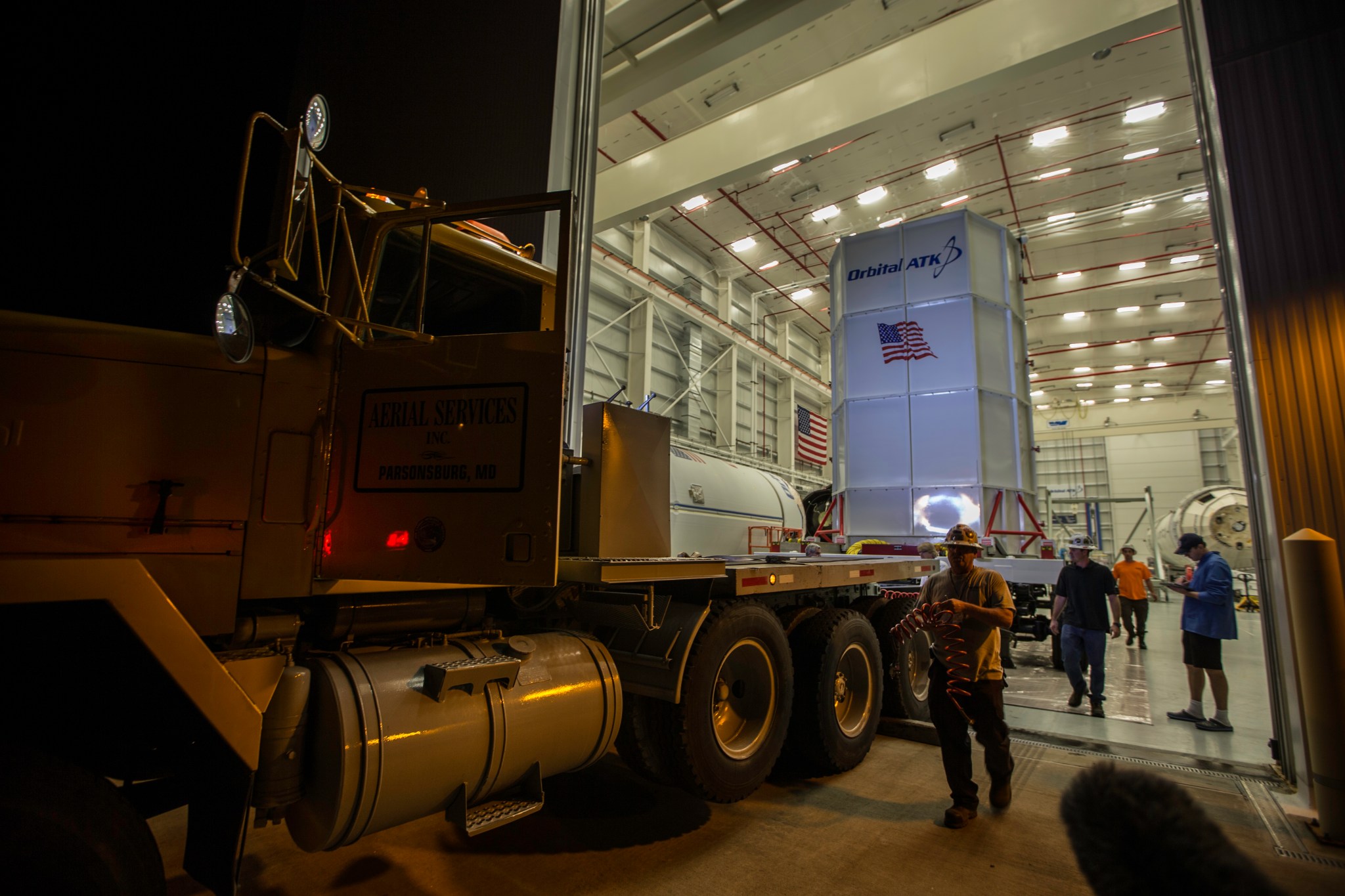
Update, Oct. 10: The launch of Orbital ATK’s CRS-5 mission has been rescheduled for Oct. 14 at 8:51 p.m.
NASA commercial cargo provider Orbital ATK is scheduled to launch its sixth mission to the International Space Station at 9:13 p.m. EDT Thursday, Oct. 13. Live launch coverage will begin at 8:15 p.m. on NASA Television and the agency’s website.
NASA TV also will air two prelaunch broadcasts Wednesday, Oct. 12. At 1 p.m., scientists and researchers will discuss some of the investigations to be delivered to the station, and at 3 p.m. mission managers will provide an overview and status of launch operations. The briefings also will be streamed live on the agency’s website.
Cygnus will launch on Orbital ATK’s upgraded Antares 230 rocket from Pad 0A of Virginia Space’s Mid-Atlantic Regional Spaceport, located at NASA’s Wallops Flight Facility in Virginia. Coverage of the spacecraft’s solar array deployment will begin at 10:30 p.m., and a post-launch briefing from the launch site will begin approximately two hours after launch.
Under the agency’s Commercial Resupply Services contract, Cygnus will carry to the space station more than 5,100 pounds of science and research in support of dozens of research investigations, as well as crew supplies and hardware.
The new experiments will include an investigation that looks at fuels that burn very hot at first, and then appear to go out, but actually continue to burn at a much lower temperature with no visible flames. A second planned large-scale fire inside Cygnus will be ignited after it leaves the space station to help researchers understand how fire grows in microgravity and design safeguards for future space missions. Cygnus also is carrying a new station research facility that will enable a new class of research experiments by allowing precise control of motion in the microgravity environment aboard the station.
The spacecraft will arrive at the station on Sunday, Oct. 16. Expedition 49 astronauts Kate Rubins of NASA and Takuya Onishi of the Japan Aerospace Exploration Agency will use the space station’s robotic arm to grapple Cygnus about 6:45 a.m. NASA TV coverage of rendezvous and grapple will begin at 5:45 a.m.
After Canadarm2 captures Cygnus, ground commands will be sent to guide the station’s robotic arm as it rotates and attaches the spacecraft to the bottom of the station’s Unity module. Coverage of installation will begin at 8:45 a.m.
Cygnus will remain at the space station until Nov. 18, when the spacecraft will be used to dispose of several tons of trash during its fiery reentry into Earth’s atmosphere, and conduct the spacecraft fire experiment.
This will be the first resupply mission to launch on the upgraded Antares 230 vehicle, and the first launch from Wallops since an Antares rocket and its Cygnus resupply vehicle were lost seconds after liftoff in October 2014. Since the accident, two Cygnus resupply missions launched on United Launch Alliance Atlas 5 rockets to the station from the Cape Canaveral Air Force Station in Florida.
Dubbed the S.S. Alan Poindexter, this Cygnus spacecraft is a tribute to a space shuttle veteran who flew on two missions to the International Space Station, one as a shuttle commander. Poindexter died in an accident in July 2012.
Learn more about Orbital ATK’s mission at:
https://www.nasa.gov/orbitalatk
Keep up with the International Space Station, and its research and crews, at:
https://www.nasa.gov/station
Get breaking news, images and features from the station on Instagram and Twitter:
http://instagram.com/iss
and
http://www.twitter.com/Space_Station
-end-
Kathryn Hambleton
Headquarters, Washington
202-358-1100
kathryn.hambleton@nasa.gov
Dan Huot
Johnson Space Center, Houston
281-483-5111
daniel.g.huot@nasa.gov



























